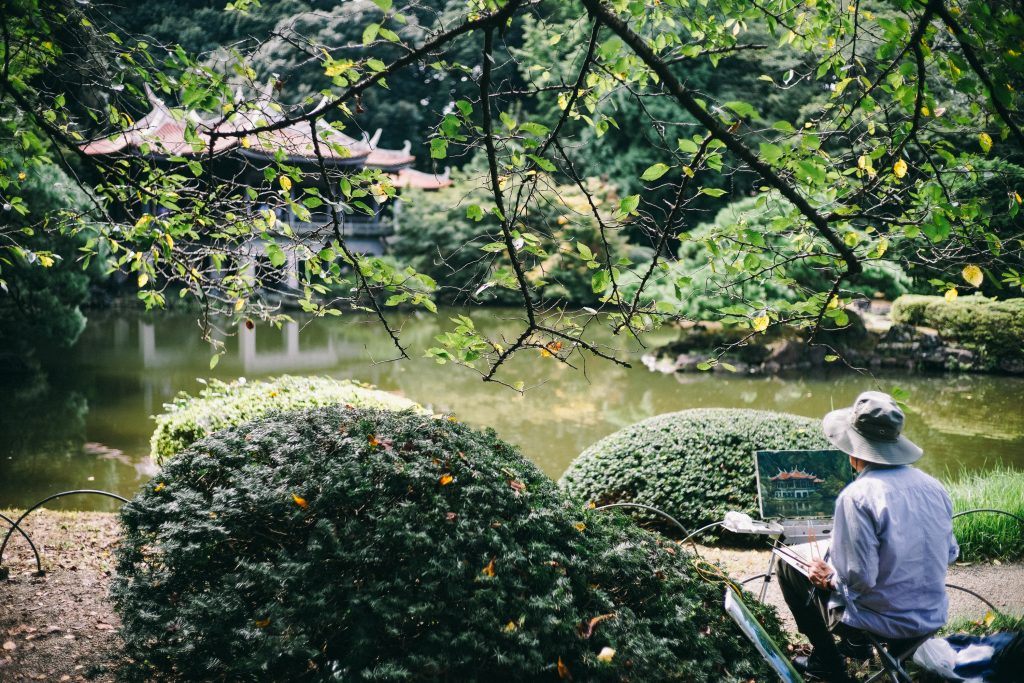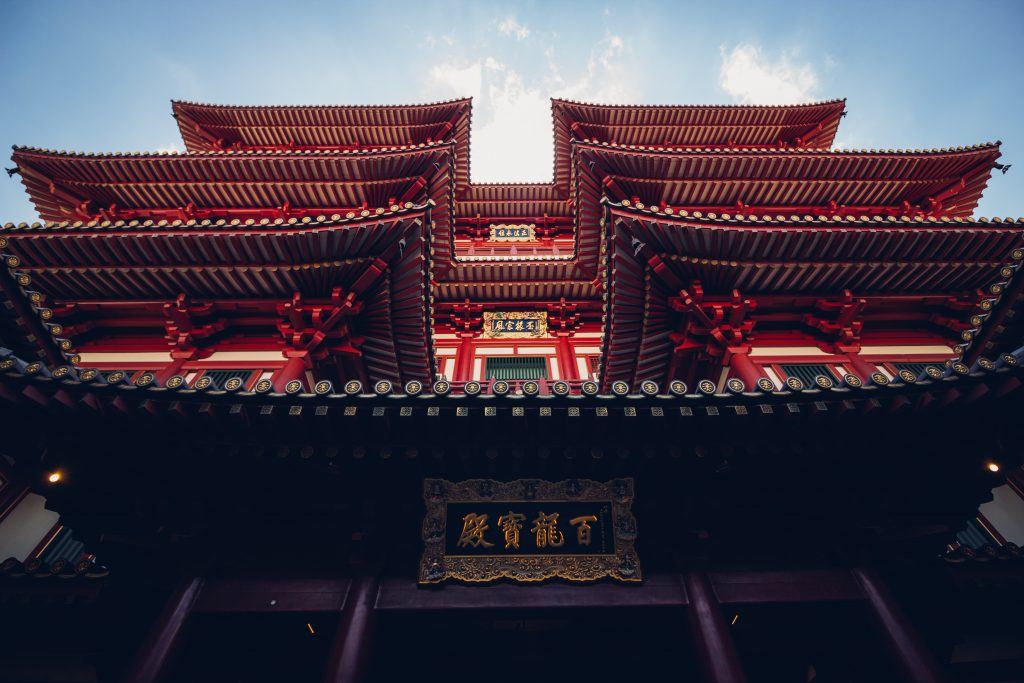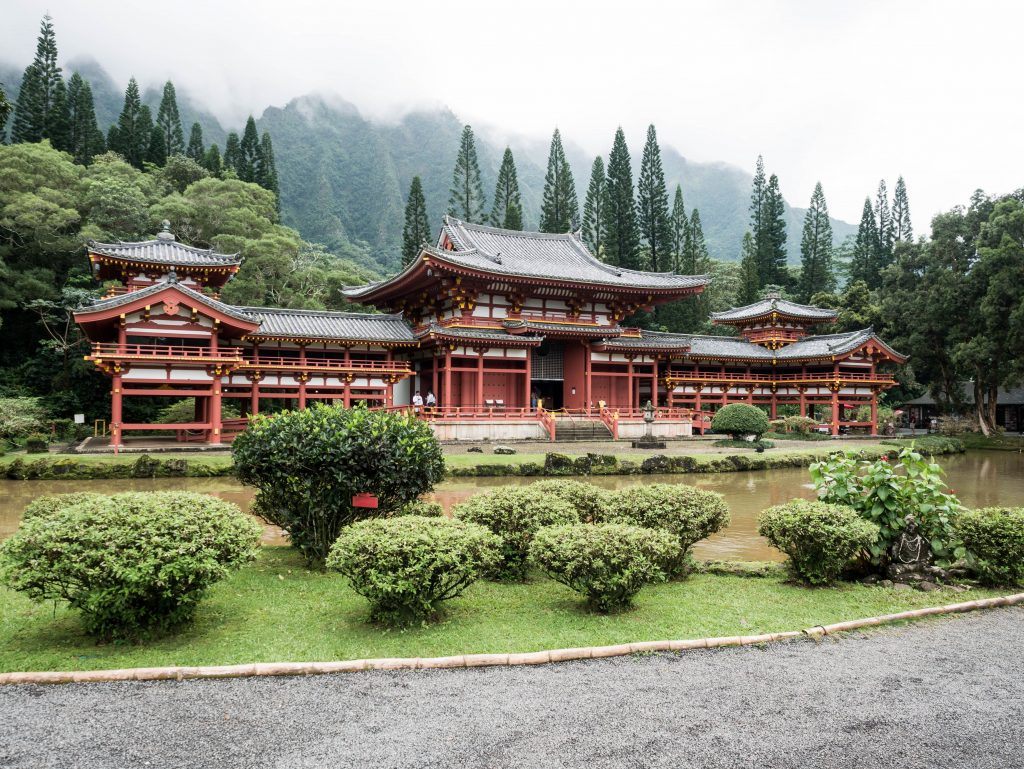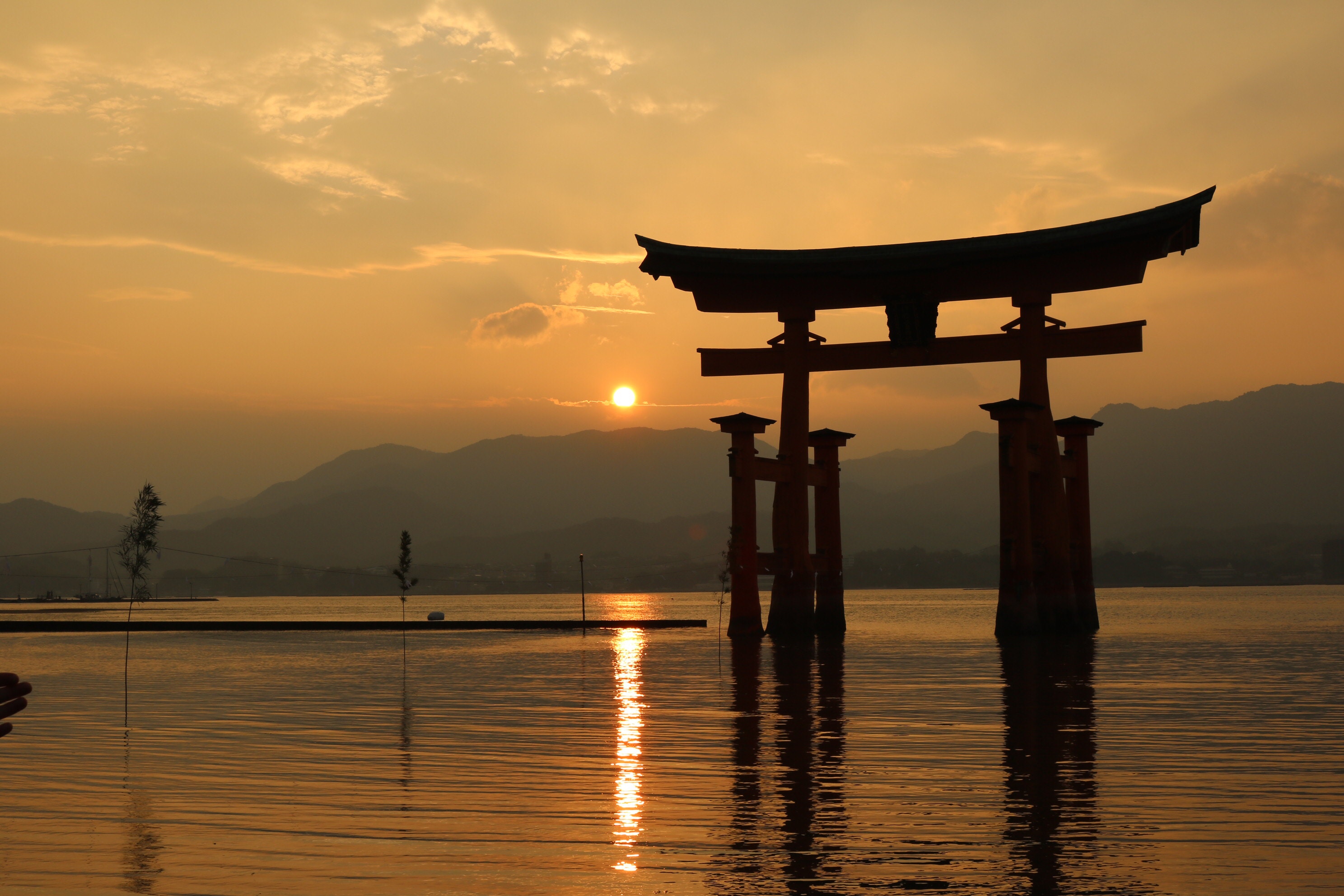Basics: What’s What at Japanese Temples?
Knowing your way around the average Japanese temple is a valuable skill to have. Before you go to Japan, check out the basic temple facts below and learn what’s what. You’ll find out about halls, pagodas, cemeteries, bells, gates and more.
The most important thing to remember, in general, is that every Japan temple location is a sacred place of worship. In fact, every Japanese city or town has at least one, sometimes more, temples. A complete Japan guide should note that temples serve many other functions as well, such as the storage and showing very sacred religious objects.
A considerable number of Japan temple sites used to be places where monks lived and worked. A few modern-day temples continue to act as monasteries, but most do not. Any complete Japan guide needs to explain the many components of a temple. Here they are, with brief definitions of each.
The Lecture Hall: Also known as “kodo,” these are the areas of the temple where tourists will be able to see the artwork and special religious objects. It’s also where meetings, discussions, and lectures take place and is probably the most “public” of all the parts of a temple.
The Main Hall: Statues are usually located in the main hall alongside other sacred historic pieces, including paintings and carvings. The Japanese call the main hall by various names, typically hatto, butsuden or kondo.
The Pagoda: Maybe the best-known part of any temple, even to Westerners who have adopted the word into their own languages, the pagoda is a direct descendant of its Indian counterpart, the stupa. Pagados are store places for relics of the Buddha himself, usually a bone or tooth, and are either three or five stories high.
Bells: Listen for bells on New Year’s Eve, when temple priests or monks ring them to represent the worldly human desires, all 108 of them. That’s why the bells ring exactly 108 times.
Gates: Every temple has a main gate, and many larger structures have one or more ancillary gates.
The Cemeteries: Nearly all Japanese temples contain nearby cemeteries or cemeteries on the grounds. This is because Japanese people view death from a Buddhist perspective and hold a formal funeral under the Buddhist traditional rules. On special days each year, people visit cemeteries to honor the memories of their deceased relatives and friends.
Essential Etiquette Tips for Temple Tourists
It’s not enough to know your way around; you also need to understand the basic etiquette rules for Japanese temples. Remember, these are sacred places, many of which house priests or monks, and most of which are regular places of worship for the local people. Treat the place and the people there with respect by following the long-established rules of behavior.

One: Know about the different kinds of temples
In your travels as a tourist, you’ll typically come across two different kinds of temples: family-run and public/tourist. Most every Japan guide will advise you not to enter a family-run temple. How do you know which is which? Public temples usually have a small hut or kiosk in front where you can pay or get a map of the grounds.
Family-run temples have no such amenities. If you enter one by accident, and there are many so be aware, there’s usually an elderly family member sitting near the cemetery, and no payment or ticket box out front. If you happen into a family temple, simply apologize and leave.
Two: Know the “general rule” for public temple etiquette
Most Westerners know how they should behave while in a Christian church, Synagogue or other houses of worship. Simply follow those same guidelines and you’ll be correct in 90 percent of your behavior inside a Japanese Buddhist temple.
Three: Dress as the Japanese do
In temples, the Japanese way is to dress very conservatively, meaning either longish dresses or formal slacks for women, and long pants for men. No t-shirts or shorts should be worn. You won’t be turned away (the Japanese abhor confrontation of any kind) but will be acting in a disrespectful way toward the people you have traveled so far to visit.
Four: Pay the fee, get a brochure and head to the purification area
Many temples will not have a purification pavilion because the tradition comes directly from the Shinto tradition and not every Buddhist temple includes this section.
Expect temples to charge either a 500 yen fee or nothing at all. You should ask for a brochure and request the English language one if they have some in stock. The attendant will give you your brochure and a small ticket as proof of payment.
Five: Learn the basics of purification (if there’s a purification area)
This part is sort of fun. Take a ladle full of water and pour a bit on your right hand, and then pour some on your left hand. This purifies your body. Then pour about two ounces of water into your right hand and put the water directly into your mouth before carefully, with mouth partially covered, spitting it onto the ground.
Tilt the ladle upward and let a small amount of water trickle down the handle. This purifies the ladle before the next person uses it. Now you and the ladle are purified and ready to enter the temple. Use the nearby towel to dry excess water off your hands and face.
Six: Know the “shoe rule”
Now that you’re in the temple area, either put your shoes on the nearby shelf or into the bag that someone gives you. Then, carefully step over (not on) the small divider on the ground. It’s about 10 inches high. Be careful because it’s very rude to step on top of it. Be certain that you step over it completely, not letting any part of your foot touch it.
Seven: Paying respect
Now is the time to face the statue of the Buddha and bow. Don’t leave your hat on while doing this. Bowing won’t magically “make you a Buddhist,” so don’t worry about it. You are not taking part in an official ceremony of a religion that is not your own. As a tourist, you are simply respecting the local custom of acknowledging the importance of a person who lived long ago and founded the religion followed by the locals.
If you see a bell attached to a rope near the Buddha statue, you should do the following: After that first bow, put a small amount of money (a few yen coins will do) in the nearby collection box, ring the bell, clap twice and pray, or just bow your head.
Any prayers of any religion are welcome. Pray silently to yourself or just stand with closed eyes for about a minute. Open your eyes, bow toward the statue again, clap just once, and then walk backward, very slowly from the area.
If you don’t see a bell, then just put your hands into an Asian praying position (arms horizontal, with only the hands, bent together at the middle of the chest) and pray silently. When you are done, bow and back away. Be very careful not to “slice the space” between the altar and someone else who is praying. It’s considered very rude. That’s why people back away, in a straight line, from the place where they are standing.
Eight: Find out the photograph policy
Most temples have large signs in many languages saying, “No photographs inside the temple.” Adhere to this rule closely, even though with today’s technology, it’s easy to sneak a silent picture wherever you can carry your phone. Take all the photos you want outside the temple and the Japanese will appreciate your consideration.
Nine: Know how to leave
Whenever you exit a room where there is a statue of the Buddha, remember that it is polite to stop at the exit door, face the statue, and bow slightly as an act of respect.
Ten: If you forget temple etiquette, feel free to ask someone who speaks English
They’ll be happy to explain the rules to you. If you cannot find anyone who speaks your language, simply follow what the locals do and you’ll be okay. Of course, if you study Japanese customs and manners before your trip, you won’t have to worry about not knowing the right thing to do in any situation.
Japanese Temples to Put on Your “Must See” List
There are hundreds of Buddhist temples and Shinto shrines in Japan, making it impossible to see and visit everything on a short trip. But tourists who want to narrow their list down to just the temples can make a go at seeing the very best ones during a one- or two-week stay in Japan.
Keep in mind that some temples charge a small fee but many don’t. The arrangement changes from year to year and temple to temple. Sometimes a temple in disrepair will charge a small fee for a few years to raise funds for renovation but then revert to being free after that.
Hours of operation also change on an almost constant basis, so the wisest way for travelers to find out when facilities are open is to check the temple’s name online and be sure to include “English language” in the terms.
That way, you’ll get the information you can understand, specific directions and other pertinent details. In most cases, temples are open during business hours throughout the week and during most months of the year.

The “Must-See” Temples
Kiyomizu-dera Temple
This temple is a UNESCO World Heritage Site and is located in Kyoto and is known as the Pure Water Temple. The temple is one of the most popular in all of Japan. Call ahead for hours and avoid holidays.
Kotoku-In Temple
This famous Kamakura temple houses the “Great Buddha” statue, a bronze giant that dates to the 13th century. The original wooden statue was decimated by a massive storm in the year 1248, so the bronze replacement was a good idea.
The Silver Pavilion
Another Kyoto temple famous the world over, it was built in 1490 and is strikingly similar to the Golden Pavilion. This temple is called, in Japanese, Ginkaku-ji. As with many of the most popular temples, try to avoid holiday visits and school tour days.
Sanjusangendo Temple
If you want to see more than 1,000 statues of Japan’s goddess of mercy, Kannon, this is the place. It’s on the east side of Kyoto and was built in 1264.
Yakushiji Temple
This is a major temple by any standard. Not only is it one of Nara’s UNESCO World Heritage Sites, but it is the headquarters of Japan’s Hosso Buddhist sect. Like the other UNESCO sites, try to avoid peak days, but make an effort to get to this one. It’s a favorite of everyone who visits.
Todai-ji Temple
A former training center for monks, this temple has been around since the 8th century and is still standing. That’s quite a feat considering that it has been hit by major earthquakes, fires and lightning strikes. It’s one of the best temples in Nara.
Ryoanji Temple
The Temple of the Dragon at Peace, this Zen monument is one of the best examples of the Rinzai sect of Buddhist architecture in Kyoto. It’s also famous for its breathtakingly beautiful rock garden.
Ninnaji Temple
If you like pagodas and dwarf cherry trees, this is the place to be. Ninnaji’s five-story pagoda stands in the center of a grove of dwarf cherry trees. It’s located in Kyoto.
The Temple in Hiraizumi
Among a series of buildings and ruins in Tohoku (Iwate Prefecture), this World Heritage Site is known for its unique architecture and wide open spaces. The town of Hiraizumi is famous among historians and archeologists as the site of multiple ancient ruins. This is one of the better stops on any “temple tour.”
Horyu-ji Temple
Another famous temple in Nara, Horyu-ji serves as a monastery as well as a seminary and boasts one of the oldest wooden structures in the world.
Sensō-ji
Dating to the year 645, this is the oldest temple in Tokyo, and one of the most beautiful. There are many legends associated with its founding, including a story about the goddess of mercy, Kannon, being the inspiration for its construction.
The Kinkaku-Ji
Perhaps the best-known temple in Kyoto, the Temple of the Golden Pavilion is supposed to be an example of the harmony between heaven and earth.
Zojo-ji Temple
This temple is conveniently located near Tokyo Tower and is one of the most popular among city dwellers. It’s a great place to meditate and find some quiet during a stay in the big city.
What to Look for and Photograph at Temples
It’s not enough to just visit and “see” when you can photograph some of the coolest things in Japanese temples. Here are a few of the most popular temple items that wind up on tourists’ social media pages as prized photographic remembrances of a vacation in Japan, along with a few “secrets” to make your visit to a temple extra special:
Monks: Sometimes you’ll see many monks at a temple, or maybe just one. Monks don’t mind having their photo taken as long as you politely ask. Just point to your camera or phone and say, “Okay?” Most times, they’ll nod and say, “Okay.” Avoid touching the monks, especially if you are a woman. Some monks have strict rules about touching women.
Gardens: Some of the best gardens in the world are located in Japanese temple grounds. This is a great chance to take a beautiful photo of you and your friends in the garden.
Lights: Large temples tend to have sophisticated lighting for staying open at night. Others close after dark. Be sure to ask about the hours of the temple so you’ll know whether you can visit in the evening.
Moss: For some reason, moss is considered almost a sacred plant form in Japanese temples. Monks work long hours trying to cultivate the hard-to-grow plant and often have displays of the various strains their temple has developed. Whatever you do, don’t touch or step on moss that you see at a temple.
Jizo statues: These tiny stone statues are miniature Buddhas that are said to protect children from harm. You’ll find them in odd places, like under bushes and shrubs, where children have to explore in order to find them.
Trails: Behind every great temple there is a great series of hiking trails, so the Japanese saying goes. If you like to hike, consider exploring the areas behind temples. Often, after a mile or so into the woods, you’ll discover small Buddha statues or shrines.
Cemeteries: Most Japanese cemeteries are connected to Buddhist temples, so it’s quite common to see family members of the deceased visiting on special holidays or on the birthday of the dead person.
Fee stations: Public temples have little boxes out front where you pay the entrance fee. Some resemble little guard houses or even doll houses. Many tourists take their photos in front of the fee stations.
Restaurants: Buddhist monk communities have a tradition of making and selling meals to tourists, at a very small profit. The money goes to help maintain the temple grounds in most cases. You can even buy beer and small snacks too. A “secret” among some tourists is to eat at least one of the day’s meals at a temple. The prices are much lower than at restaurants and the food is usually better.
Bells: You won’t be able to ring the giant bells unless you are at a temple on New Year’s Eve. Even then, you’ll have to stand in a long line of Japanese people who want to do the same.
Bamboo: Japanese temples often have bamboo groves on the grounds. These unusual sites are a photographer’s dream. Wander through the tall bamboo shoots and shoot away.
Deer: The deer, especially in Nara, are very cute but also quite aggressive. Be careful if you are of small stature because the deer often take advantage of children, the elderly, and petite women. They have been known to butt, bite, and even charge toward people in search of food.
Fortunes: Some temples have little kiosk-like spots where you can take a fortune off the wall and read it. If it’s good, keep it and take it with you. Supposedly, that will make it come true. If it is bad, tear it up. That will assure it does not come true.
Other tourists: There are more than 100,000 temples in Japan, but only about 50 are on the “must-see” list of tour books and Japan guide literature. The Japan temple rule is this: avoid the major temples during holiday season and weekdays during the school year.
Cherry blossoms: Monks and temple workers often cultivate cherry blossoms on the grounds. Some of the better viewing possibilities during cherry blossom season are at Japan temple grounds.
Kannon statues: Kannon is the Japanese patron of mercy, and is famous for her Mona Lisa-like smile. Not every temple has a Kannon statue, but if you see one (it will be labeled), be sure to get a photo. It’s considered very lucky to be photographed next to Kannon.

Spending time at Japanese temples is one of the best ways to get a feel for the culture. Buddhism is part of the fabric of Japanese history and modern life. Because people tend to mix both Buddhism and Shino practices throughout their lives, it’s safe to say that about 95 percent or more of the population would consider themselves to be practicing Buddhists to one degree or another.
Always remember to abide by standard temple etiquette at any facility you visit. Also be sure to ask Japanese friends if there are any special rules at particular temples. Usually, if a temple has special guidelines for tourists, there will be large signs in multiple languages in very visible locations. Pay attention to such notices in order to make your time at Japanese temples a pleasant one.
